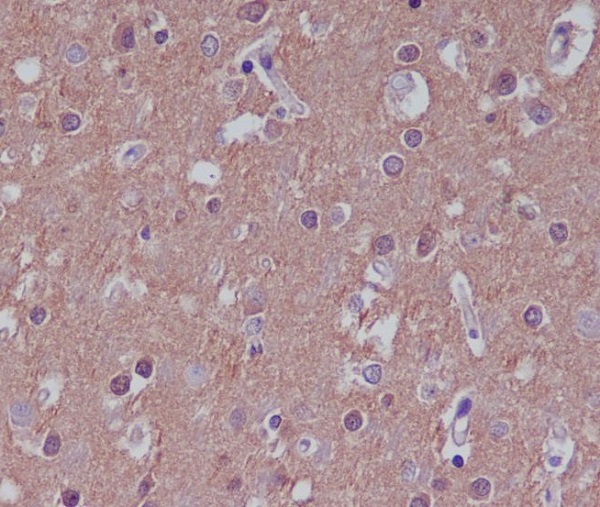
| WB | 咨询技术 | Human,Mouse,Rat |
| IF | 咨询技术 | Human,Mouse,Rat |
| IHC | 1/100-1/200 | Human,Mouse,Rat |
| ICC | 技术咨询 | Human,Mouse,Rat |
| FCM | 咨询技术 | Human,Mouse,Rat |
| Elisa | 咨询技术 | Human,Mouse,Rat |
| Aliases | Protachykinin-1; PPT; Neurokinin A; Neuromedin L; Substance K; Neuropeptide K; NPK; TAC1; NKA, NKNA, TAC2; Tachykinin 1; tachykinin 2;;TAC1 |
| WB Predicted band size | 15 kDa |
| Host/Isotype | Rabbit IgG |
| Antibody Type | Primary antibody |
| Storage | Store at 4°C short term. Aliquot and store at -20°C long term. Avoid freeze/thaw cycles. |
| Species Reactivity | Human |
| Immunogen | A synthesized peptide derived from human TAC1 |
| Formulation | Purified antibody in PBS with 0.05% sodium azide,0.05% BSA and 50% glycerol. |
+ +
以下是关于 Substance P 抗体的3篇参考文献示例(注:文献为示例性内容,实际引用需核实准确性):
---
1. **文献名称**:*"Immunohistochemical localization of Substance P in the rat spinal cord using a novel antibody"*
**作者**:Hökfelt, T. et al.
**摘要**:该研究通过免疫组化技术,使用高特异性的Substance P抗体,揭示了其在脊髓背角神经元中的分布,并验证了抗体在检测神经肽释放中的有效性,为疼痛信号传递机制提供了依据。
2. **文献名称**:*"Substance P antibody-based ELISA for quantitative analysis in inflammatory models"*
**作者**:Bradesi, S. et al.
**摘要**:作者开发了一种基于Substance P抗体的ELISA检测方法,用于定量分析大鼠结肠炎模型中的Substance P浓度变化,发现其与炎症严重程度呈正相关,证实了抗体在体液检测中的可靠性。
3. **文献名称**:*"Role of Substance P in cutaneous inflammation: Antibody-mediated neutralization studies"*
**作者**:Steinhoff, M. et al.
**摘要**:研究利用Substance P抗体中和实验,证明该神经肽在银屑病样皮肤炎症中的关键作用,抗体通过阻断受体结合显著减轻了病理症状,提示其潜在治疗价值。
---
如需进一步文献,建议通过PubMed或Google Scholar检索关键词“Substance P antibody”、“Substance P immunohistochemistry”等。
Substance P antibody background:
Substance P is a neuropeptide belonging to the tachykinin family, primarily functioning as a neurotransmitter and neuromodulator. It binds to neurokinin-1 (NK-1) receptors and plays critical roles in pain signaling, inflammatory responses, mood regulation, and emesis. Antibodies targeting Substance P are essential tools for detecting and studying its distribution, expression, and function in biological systems. Developed through immunization protocols using synthetic Substance P or its fragments, these antibodies enable researchers to visualize the peptide in tissues (via immunohistochemistry), quantify its levels (using ELISA or radioimmunoassays), and explore its interactions with receptors (through blocking experiments).
Substance P antibodies are widely applied in neuroscience, immunology, and pharmacology research, particularly in studies of chronic pain, neurodegenerative diseases, and inflammatory conditions. However, their utility depends on specificity, as cross-reactivity with other tachykinins (e.g., neurokinin A) can occur due to structural similarities. Validation via knockout controls or mass spectrometry is often recommended. Monoclonal antibodies offer consistency, while polyclonal versions may detect multiple epitopes. Commercial availability since the late 20th century has accelerated research into Substance P's pathophysiological roles and therapeutic targeting, including investigational NK-1 receptor antagonists.
×